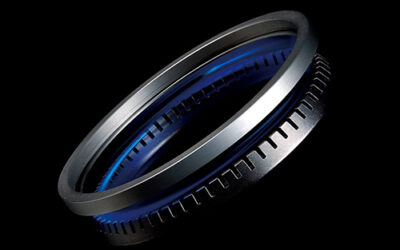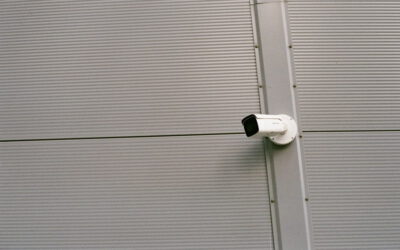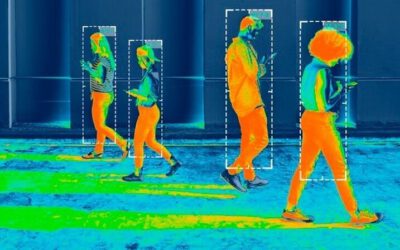What Is an Exoskeleton Suit?

For many centuries, a physical disability has been considered a limitation to the human potential of movement, work performance, and daily routines. But today, with the advancement of innovative technologies, the lives of the disabled become fuller and less restricted. This becomes possible with the advent of a custom exoskeleton suit that can enhance the human body’s functions and remove physical barriers.
Exoskeletons come from the sphere of sci-fi for many laypersons, and for a long time, they have been the legacy of secret military departments. For example, the use of a drone machine vision system is commonplace in distance visual inspection operations on the battlefield. The second leading industry where exoskeletons gain acceptance in daily use is clinical rehabilitation, as it’s a wearable exoskeleton system giving the temporarily or permanently disabled full mobility. Such suits can enhance the strength and endurance of their owners, giving people with mobility issues complete freedom of movement and dignity of full-scale functioning.
Exoskeletons can also help the disabled improve their quality of life even after sustaining severe injuries and losing most of their physical and cognitive functions. For instance, an exoskeleton suit for paralytics can help immobilized people restore the ability to communicate with their relatives and hospital staff without words.
Here we discuss the use of exoskeleton suits for the disabled and explain everything you need to know about this new sphere of robotics-aided rehabilitation.

How Does the Exoskeleton Suit Work?
Let’s take a look at the mechanics behind the operation of a bionic exoskeleton suit. How does it work, and how can a disabled person operate this tech? First, you should note that such suits are motorized or mechanical, meaning that they can be powered by electricity or the wearer.
A passive exoskeleton has no external energy source, functioning as a redistributor of weight from one body part to another one. For instance, the upper-extremity exoskeleton takes the weight off your shoulders and arms, distributing it to more resilient body parts, such as the core or legs.
Powered exoskeletons add strength to the user or activate some lost functions. By wearing such an exoskeleton suit, paralyzed people can get up and move like others. Still, they are less convenient because of the need to recharge the system, change its batteries, and wear a much heavier structure with all those batteries and cables.
As a rule, the ergonomic suit has a frame positioned around the human body; it can be soft or hard, depending on the suit’s purpose and mode of functioning. Sensors are also added optionally to specific types of suits, such as, for instance, a wearable emergency button, a temperature sensor, or a sensor that reads the eye movement of a paralyzed person to translate their message into words.
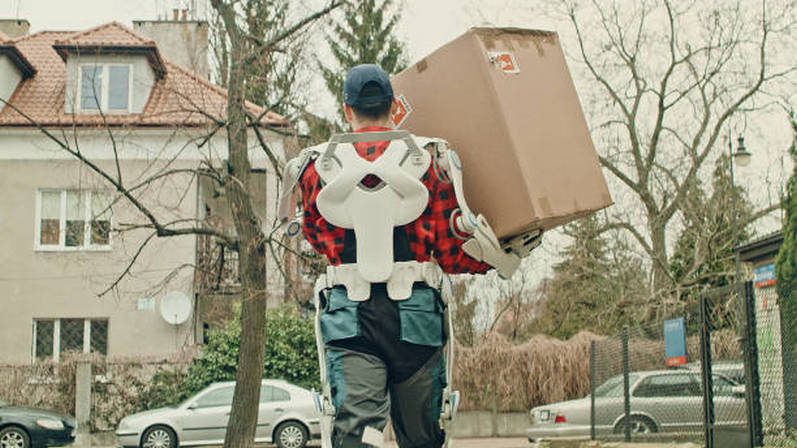
Types of the Exoskeleton Suit
So, what type of an exoskeleton do elderly persons need, and from what product range can they choose? Here is a breakdown of available suit types.
- Power-enhancing gloves
These gloves have sensors that detect the user’s readiness to grip an object. Once the gripping activity takes place, the glove enhances the user’s strength.
- Upper body support
This type of nano exoskeleton construction suit is meant to reduce the pressure on the wearer’s arms and shoulders by reallocating it to the body’s core or legs. This suit type helps construction workers feel less fatigue and back pain as a result of tedious, repetitive tasks with heavy objects on the construction sites.
- Lower body support
When we talk about lower-body support suits meant for rehabilitation or empowerment of the disabled, they work in conjunction with the muscles of the affected extremities to help people position their legs safely, avoid falls, and improve their gait. These suits help people in the crouching, standing, and walking activities. They use sensors to detect the anticipated action by the wearer and assist in its execution by giving the needed support for the lower extremities. Exoskeletons for people rehabilitating after a stroke or injury target muscle re-education and prevention of atrophy resulting from a lengthy non-use of affected muscles.
- Full-body skeleton
Full-body suits are meant for a variety of purposes, but their creation involves sophisticated and expensive hardware development. They are specifically meant for disabled and severely injured people who have lost their body mobility. Some of such suits can translate the human brain’s activity into motion by interpreting the signals and sending them to the suit’s sensors.
H2: Pros and Cons of Using the Exoskeleton Suit
With the evidence provided above in mind, one might think that an exoskeleton suit for the handicapped is a panacea for disability and rehabilitation of severe injuries. This assistive technology is indeed highly valuable in many aspects of physical rehabilitation. Its benefits are as follows:
- Boosted strength and endurance
The exoskeleton’s design is meant to enhance human strength and endurance, thus preventing traumas and fatigue in the workplace and improving the workers’ quality of life. This effect is similarly vital for the disabled, as their rehabilitation process often stagnates because of the overall bodily weakness and inability to mobilize all joints and muscles at the same time. An exoskeleton can ease the burden and help patients progress through their motor rehabilitation faster.
- Muscle re-education
Exoskeletons can help a patient’s extremities move the way they should without the need to do all the work alone. These supportive structures assume a part of the bodily function and boost muscle re-education with proper, safe movements of the lower and upper extremities.
- Body support
With the help of this new technology, you can solve specific health problems, such as fatigue of lower or upper extremities, excessive load on the spine, the pressure of regular weightlifting on the shoulders, arms, and neck, etc. Thus, a custom-tailored exoskeleton can become a valuable helper in any industrial or medical practice.
- Full-scale movement for previously disabled, immobilized people
Exoskeletons enable even permanently immobilized and paralyzed people to effectively regain mobility and control their bodies.
However, one shouldn’t forget that, like any other new and developing technology, the exoskeleton also poses some challenges and limitations for users and producers.
- Materials
The major pressing challenge of the exoskeleton industry is to create strong but lightweight suits that would not make their owners’ lives challenging. At present, the weight of most suits is considerable, causing trouble and discomfort in the movement on the stairs, putting the suit on and off, etc. It’s not surprising, given the number of components, structures, and smart sensors (read more about them here) with which a typical suit is equipped.
- Power
Another issue with exoskeleton suits is the use of a stable, sustainable power source guaranteeing frictionless use of this technology. Powered exoskeletons are mightier than passive ones, but they require cables and wires to connect the powered parts, which is not always user-friendly or safe. Thus, the present-day exoskeleton producers look for new ways to combine optimal design and potent energy sources to enhance the exoskeletons’ overall usability.
- Joint Flexibility and Activation
Human joints and the spine are flexible, which is a challenge for exoskeletons. No innovative technology can mimic the human movement fully, which is often a challenge on suit construction. Soft suits are much more flexible in movement, but they give less support to the human body than a hard suit can. Thus, the modern challenge is to combine flexibility with robust body support.
- Safety
Permanent use of exoskeletons may be hazardous for human health because a soft suit may prevent proper body temperature regulation or hinder the body’s growth. Besides, they cannot stretch or expand as a human body, thus limiting the spectrum of functional movements. The presence of batteries, cables, and wires can also be dangerous in case of a fall or sudden suit damage.
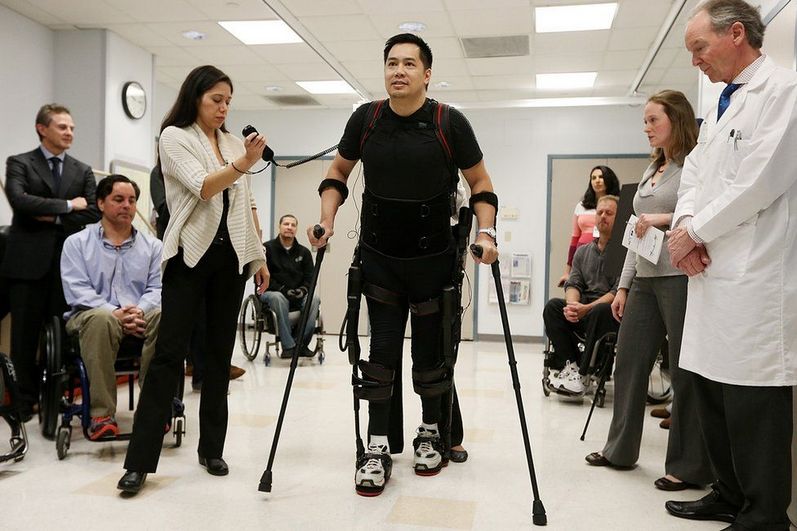
Exoskeleton Suit
Developing a Robotic Exoskeleton Suit for Disabled
If you’re interested in exoskeleton suit development and wish to create your own product for the disabled, come to Aduk GmbH for a consultation and end-to-end development services. We have many years of practical expertise in the design and development of advanced mechanics, electronics, and robotics. You will work with a team of enthusiasts knowing a wide range of robotic technologies and able to offer innovative solutions for your business idea. You can create a full-body skeleton suit for disabled with our help, enter the market with an appealing product, and win a loyal customer base.
Recent Posts
- What Is an Exoskeleton Suit?
- Where can you use an ultrasonic motor?
- Smart Camera: System That You Can Use for a Wide Variety of Purposes
- Why Is the Smart Toothbrush Better Than a Regular One?
- Microcontrollers: An Integral Part of Embedded Hardware
- Air Quality Monitoring System: Why It’s So Important in Modern Realities
